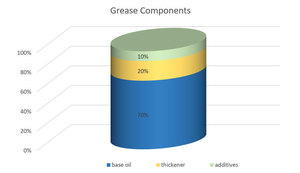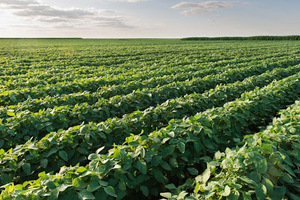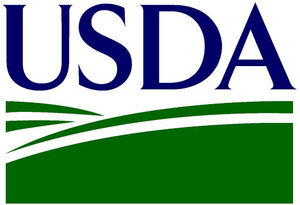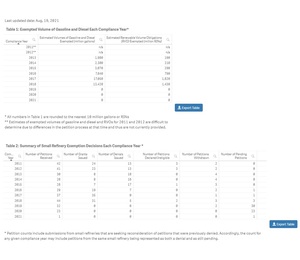Quality Grease: Critical at Pellet Mills
Energy Disrupter
In addition to base oils and thickeners, additives enhance grease functionality, which is critical for operational and financial performance.
- <img src="http://biomassmagazine.com/uploads/posts/magazine/2021/08/resize/Contribution1-lede_16291221091173-300×300-noup.jpg" title="Fig. 1 Basic grease composition.
Fig. 1 Basic grease composition. </small>”> - <img src="http://biomassmagazine.com/uploads/posts/magazine/2021/08/resize/Contribution1-chart_16291221091484-300×300-noup.jpg" title="Table 1: Comparison of simple and high-quality greases. The table does not include loss of production as prices vary, and the average time for equipment maintenance is difficult to generalize. * Cost per pellet mill assuming 24-hour operation 28 day
</small>”>
ADVERTISEMENT
Most roller bearing applications use grease lubrication. Grease serves functional properties and is used where oil lubrication is impossible or impractical, reduces wear of moving parts and acts as a sealant and shock absorber. Grease also holds solid lubricants in suspension. Choosing the wrong lubricant accounts for approximately 40% of all machine failures, and most other failures occur due to lack of lubrication. In bearings, some 80% of failures are related to lubrication or contamination.
Grease Purposes, Characteristics
Grease is a mixture of base oil, thickener and additives. The base oil can be mineral or synthetic. While sensitive industries such as pharma or food, and extreme-temperature applications mostly rely on expensive, synthetic base oils, mineral-based oils suffice for wood pellet applications. The thickener produces the semifluid structure, thus acting as an oil stabilizer, comparable to a sponge holding the oil in place. The majority of thickeners are metallic soaps, including lithium and aluminum. Other common thickeners are polyurea, sodium, clay and calcium. Nowadays, most thickeners consist of metallic soaps combined with complex agents. Very widely used are lithium-complex thickeners, which are a combination of conventional lithium soaps and low-molecular-weight organic acids. Nonsoap thickeners such as bentonite are gaining popularity in high-temperature and special applications, but there limits posed by the base oil oxidization and poor water compatibility of clay thickeners.
Additive package components and percentage often define the quality of a grease. Additives enhance desirable properties, suppress existing undesirable properties and add new properties. Most common additives include oxidation and rust inhibitors, extreme pressure (EP) and antiwear or friction-reducing agents. The number of additives defines the grease service life (GSL). The GSL is the time elapsed during use until the lubricating properties have faded and need to be replenished. Operating temperature, load, speed and other environmental conditions affect the GSL. In wood pellet manufacturing, environmental conditions are harsh. High loads, saw dust, moisture and vibration put a lot of stress on the equipment. Greases help main bearings and roller bearings withstand this harsh environment.
Besides functional properties, greases have certain physical characteristics that enable them to serve their purpose, such as viscosity. Viscosity defines the thickness of the oil and its resistance to flow and shear. Higher viscosity oils have larger molecules with a high internal friction (Van der Waals forces). The importance of choosing the right viscosity should not be overlooked. A thick initial film might not be dragged through the loaded zone, while a film too thin tears quickly, allowing metal-on-metal-contact. To help withstand operational stress, greases are consistent, meaning they are resisting deformation by an applied force. The measure of consistency is called penetration. Penetration depends on whether the consistency has been modified by handling or working. ASTM D 217 and D 1403 are standard test methods for cone penetration of unworked and worked greases. To measure penetration, a cone of a given weight sinks into a grease for five seconds at a standard temperature of 25 degrees Celsius (77 degrees Fahrenheit).
The dropping point of grease is another indicator for choosing the correct grease. It is an indicator for heat resistance—the temperature at which the grease becomes so fluid that it drips. The dropping point indicates the upper temperature limit at which the grease retains its structure. This is not the maximum temperature at which a grease may be used, however. Furthermore, water resistance characterizes a grease. Water resistance means withstanding the effects of water with no change in lubrication abilities, mainly preventing oxidation (corrosion) and lack of lubrication (wash out).
Finally, the pumpability of a grease is important for loss-lubrication applications such as wood pelleting. The grease should withstand temperature differences in storage and be pumpable through long lines of (automated) lubrication systems.
Grease Selection for Wood Pellet Production
Very simplified, pelletizing wood is the process of pressing shredded woody raw material into cylindrical bits. The process is much more complex than that, however, Pelletizing causes high loads and other stress on equipment such as roller bearings, and with some pellet mills, main bearings also experience a lubrication loss. Low-cost, mineral oil-based lithium complex greases with EP additives are typical for this application. Grease consumption varies widely among pellet mill manufacturers, but high consumption can only grease consumption can only be economical when the lubricants are cheap. A total lubrication cost comparison shows a clear benefit for specialty high-performance greases. The lubrication performance, or total lubrication costs (TLC), consider many factors: price per pound, consumption volume, average equipment lifetime and production loss. Thus, the price for high-quality lubricants is relative. While the price per pound is a knockout criterion for buying centers, it is actually of secondary importance. Considering possible volume savings and longer lifetimes, high-performance greases swiftly become superior in the TLC comparison. A grease that is 15 times more expensive is already a win when the volumes are 20 times lower. With prolonged service life for bearings, this benefit increases. A dramatic improvement comes with lower production loss and higher system availability. Power savings are the cherry on top.
Besides financial benefits, quality grease offers superior emergency operating features, protecting equipment. The additive content and fit for heavy-duty application decreases the effects of lubrication failures. Especially in the case of solid lubricants, the coating protects sliding surfaces from wear-and-tear, even for a certain time without relubrication. This is of critical importance when it comes to preventing total equipment losses, fires and other safety-relevant failures. Along with good housekeeping, regular maintenance and staff awareness, greases round up the fundamentals of good practice and stable operation at high output.
Author: Holger Streetz
COO & Board Member, Bathan AG
h.streetz@bathan.ch
















